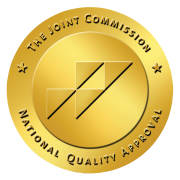What Causes Borderline Personality Disorder?
In the world of mental health, understanding is the first step toward healing. Today, we delve into the complex, multifaceted world of borderline personality disorder (BPD). First and foremost, we want to cover what causes borderline personality disorder. But we also want to get into its everyday reality, and the path toward managing it.
What Causes Borderline Personality Disorder?
If BPD were a landscape, it would be both stormy and beautiful, a place where emotions run deep and the quest for stability is ongoing.
Our psychological makeup is not simply black and white. It comes from multiple threads—genetic material, life experiences, and our interactions with the world. Borderline Personality Disorder, emerges when the tapestry is woven under particular conditions—sometimes involving genetic predispositions, sometimes through environmental factors like trauma or unstable relationships during formative years, and often, a combination of both.
Root of BPD
So what causes borderline personality disorder? Scientifically speaking, there isn’t a single cause for BPD. It’s like a stew with several key ingredients. Here is a collection of factors that could cause borderline personality disorder.
- Genetic Predisposition: Family history of BPD or other mental health disorders increases risk.
- Brain Structure and Function: Changes in areas of the brain that control emotions and decision-making might contribute to BPD symptoms.
- Neurotransmitter Issues: Imbalances in neurotransmitters, including serotonin, could play a role.
- Environmental Factors:
- Traumatic Life Events: Experiences of abuse, neglect, or abandonment during childhood.
- Unstable Family Relationships: Growing up in a family environment marked by conflict, instability, or invalidation.
- Early Attachment Issues: Problems with bonding and attachment in early development can impact emotional regulation and interpersonal relationships later in life.
- Cognitive Factors: Ways of thinking that might make a person more prone to experiencing intense emotions or fears of abandonment.
- Social Factors: Bullying, social isolation, or societal discrimination can exacerbate vulnerabilities to developing BPD.
- Stressful Life Events: Significant life changes or stressful events can trigger the onset in susceptible individuals.Top of Form
Bottom of Form
What Does Borderline Personality Disorder Feel Like?
To understand what BPD feels like, imagine living in a world where your emotional thermostat is turned up to the highest setting. Emotional sensitivity is a trait many with BPD share; they feel emotions more intensely and for longer periods. It’s as if their emotional skin is thinner than most, exposing them to the harsh elements of the world in ways others might not understand.
Joy, pain, love, fear—every emotion is felt with overwhelming intensity. Relationships are the roller coasters in this world, marked by a profound fear of abandonment that can lead to intense, unstable connections with others. It’s a challenging way to navigate life, often misunderstood by those on the outside.
When Does BPD Develop?
BPD typically makes its presence known in adolescence or early adulthood, a time when life is already a whirlwind of change. It’s a crucial period for identity formation, and for those with BPD, the quest for self can be particularly tough.
This doesn’t mean that symptoms suddenly appear out of nowhere; they might have been simmering beneath the surface, becoming more noticeable as one navigates the complex social landscapes of young adulthood.
What Are the symptoms to look for?
BPD manifests in diverse ways, but common threads include a pattern of unstable relationships, a wavering sense of self, impulsive actions, and a roller coaster of emotional states.
It’s important to remember, though, that BPD looks different in everyone. The disorder wears many masks, and understanding the person beneath is key to providing support.
Is There a Test for BPD?
Diagnosing BPD isn’t as straightforward as a blood test or a simple questionnaire. It involves a comprehensive evaluation by a mental health professional, who looks at the pattern of thoughts, feelings, and behaviors over time. It’s a process of understanding the whole person, not just ticking boxes on a checklist.
Can BPD Be Cured?
“Cure” is a loaded word. When it comes to BPD, the journey is more about management and recovery than a definitive end point. Therapies like Dialectical Behavior Therapy (DBT) teach skills to manage emotions, navigate relationships, and find stability in the self. With the right combination of therapy, possibly medication, and support, individuals with BPD can lead fulfilling lives. Life with borderline personality disorder can be joyful again, filled with normal life events and relationships.
The reality of what causes borderline personality disorder is complex. However, learing about it creates a rich opportunity with the potential for growth. There will certainly be storms, but also moments of profound beauty and understanding.
Let’s Talk About Help for BPD
Navigating the turbulent waters of Borderline Personality Disorder can feel overwhelming, but at Lido Wellness Center in Newport Beach, we believe in a journey of healing anchored in understanding, compassion, and the latest in therapeutic advancements. If you or a loved one are wrestling with the complexities of BPD, let’s explore this landscape together. Our dedicated team offers personalized care that addresses the unique tapestry of your life, integrating therapies like Dialectical Behavior Therapy to help manage emotions, build relationships, and find your balance. Don’t walk this path alone; Lido Wellness is here to guide you toward a horizon of hope and healing. Reach out today, and let’s embark on this journey together.

